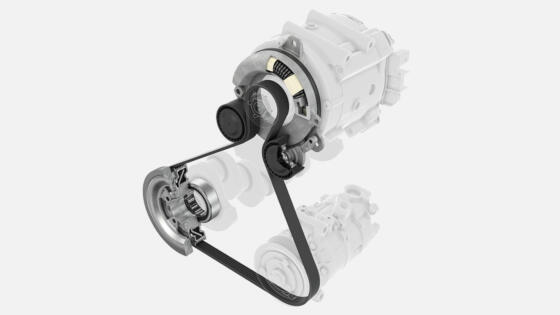Space travel history: Robotic duo in a dialog
People on our planet speak some 7,000 different languages. That’s an impressive number. No less impressive is the number of the variety of computer languages: some sources count 9,000 variants. That’s more languages than those spoken by humans. Wikipedia at least indicates 700 – from A.NET to ZPL.
In view of those facts, it’s even more exciting to see that two robots from two different “cultural IT spheres” are beginning to play “I spy with my little eye” in the middle of outer space across all programming language obstacles – as was recently the case on the ISS.
ICHIBAN is the name of the so far unique project taking its cues from the Japanese word ichiban meaning as much as “the first.” The two players are robot CIMON from the German Aerospace Center (DLR) and Int-Ball2 from the Japanese Space Agency JAXA.
Just like a German and a Japanese child in terms of their native language skills are hardly prepared to play with each other “I spy with my little eye” so aren’t computer systems of the two robots and their underlying networks. Especially since they were developed for a variety of tasks and not designed to interact with other systems. That’s why new protocols and security standards had to be established to close that gap. Computer language tutoring so to speak. And all that with the high security standards of the ISS in mind.
That’s how the game in space went
Astronaut Takuya Ōnishi performed the role of game master in the European Columbus module. He issued voice commands to CIMON that were translated to the Int-Ball2 computer language world via the background networks. Subsequently, the Japanese computer ball – in a spatially separate way – looked around its module trying to find “I spy with my little eye” objects. In this case, they were hidden ones such as a magic cube, tools, or an Int-Ball predecessor. In case of a hit, Int-Ball 2 would transmit corresponding pictures to CIMON. That was another first because the spherical computer had previously transmitted pictures exclusively to the Japanese control center on Earth.
“The ICHIBAN demonstration […] marks an important milestone in space robotics”
Dr. Christian Rogon, ICHIBAN project leader at the German Space Agency in the DLR
Like parents who are pleased about the learning progress and constructive interaction of their children the scientists involved in the playful space experiment were thrilled. “The first communication between the independently developed systems CIMON and Int-Ball2 points the way for connecting intelligence and robotics in exploration. This achievement will decisively improve the support of astronauts,” says Dr. Christian Rogon, ICHIBAN project leader at the German Space Agency in the DLR.
The practical benefits of the experiment
In the future, the two newly connected systems might be working together to support experiments and to photographically document them. In addition, they could examine the ISS interior with a camera for defects and track down free-floating objects potentially posing a risk to the crew and the on-board experiments.
What may sound simple at first, marks a premiere in space. To achieve it, not only required the interaction of two systems that were never designed for that purpose but also compliance with the high safety standards of the ISS. They don’t normally permit communication across the boundaries of the various networks in the different ISS modules.
These are the two players: CIMON-2 and Int-Ball2.
CIMON (Crew Interactive Mobile Companion) has been on board of the ISS since 2018. It’s the first robot to have used an artificial intelligence system to interact with the ISS crew in free-floating style. The astronaut assistance system can see, hear, understand, and talk. As a learning system, it can even perform non-practiced tasks. Besides its scientific involvement, CIMON delivers entertainment, be it by playing music or engaging in a little chat now and then. CIMON’s name is not accidentally reminiscent of “Professor Simon Wright,” the robotic assistant – the “flying brain” – from the Japanese science fiction series “Captain Future.”
Int-Ball2 is a spherical camera-equipped drone of the Japanese Space Agency JAXA. It has been on board of the ISS since 2024 and is ground-controlled. Int-Ball2 is stationed in the Japanese Kibo module enabling the ground control team, without the help of astronauts to film any place and angle of the Kibo module. This relieves the workload of the astronauts who used to have to spend around ten percent of their time on photography work.





